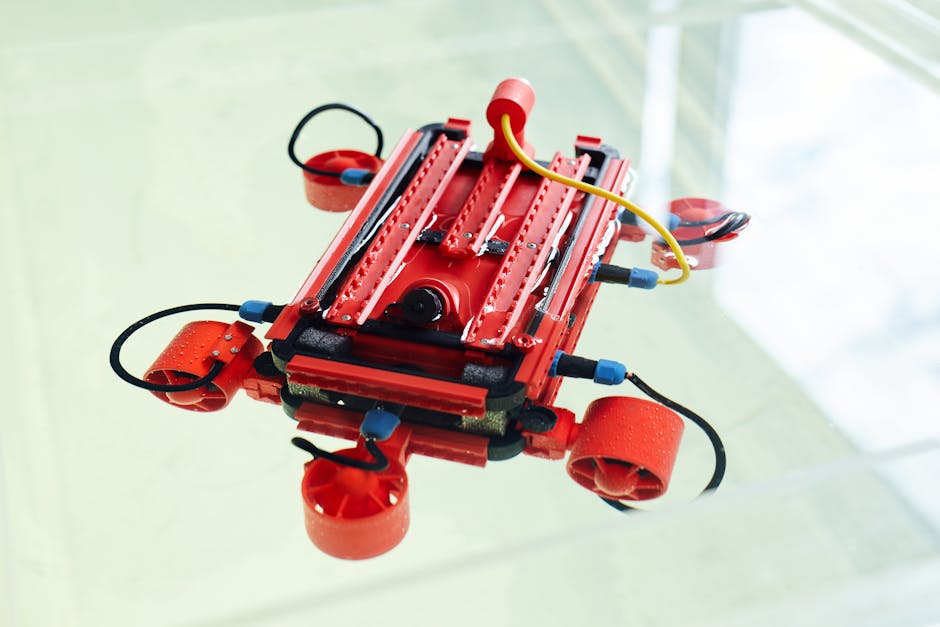The Evolution of Cost Estimating Software in the Manufacturing Sector
The evolution of cost estimating software in the manufacturing sector has been marked by a transition from traditional, manual methods to sophisticated, data-driven platforms. As the manufacturing industry continues to prioritise accuracy, efficiency, and cost control, the demand for advanced estimating tools has grown significantly.
Early methods have given way to spreadsheet-based tools, followed by the integration of 3D modelling and CAD technology. The latest trend involves the adoption of data-driven estimating platforms that leverage historical data, machine learning, and advanced algorithms to provide highly accurate cost estimates.
This evolution reflects the industry’s commitment to precision and informed decision-making. Understanding these changes is crucial for businesses seeking to maintain a competitive edge and exercise precise control over their manufacturing costs.
Key Takeaways
- Early cost estimating methods relied on manual calculations and historical data analysis, but they were time-consuming and prone to errors.
- Spreadsheet-based tools revolutionised cost estimating in manufacturing by automating calculations, incorporating diverse cost factors, and allowing for customisation.
- The integration of 3D modelling and CAD enhanced cost estimating through comprehensive visualisation, accurate material and labour cost estimations, and virtual prototyping.
- Adoption of data-driven estimating platforms improves accuracy and efficiency in cost estimation processes, with real-time cost updates, predictive analytics, and continuous improvement through machine learning.
Early Cost Estimating Methods

Early cost estimating methods in the manufacturing sector relied heavily on manual calculations and historical data analysis. Historical techniques formed the basis of cost estimation, where past project costs and outcomes were analysed to provide a reference for future estimations. Manual calculations were the norm, with estimators spending significant time on complex mathematical computations to derive cost estimates. This approach often resulted in time-consuming processes and limited the ability to quickly adapt to changes in project requirements or market conditions. The reliance on manual calculations also posed a risk of errors, potentially impacting the accuracy of cost estimates.
As manufacturing processes evolved, the limitations of historical techniques and manual calculations became increasingly apparent. The need for more efficient and adaptable cost estimating methods paved the way for the emergence of spreadsheet-based tools. These tools revolutionised the cost estimating process by automating calculations, enabling faster iterations, and providing a more flexible platform for incorporating diverse cost factors.
The transition to spreadsheet-based tools marked a significant shift in the cost estimating landscape, setting the stage for further advancements in cost estimating software.
Emergence of Spreadsheet-Based Tools

The emergence of spreadsheet-based tools revolutionised cost estimating in the manufacturing sector. These tools provided a more efficient and adaptable platform for automating calculations and incorporating diverse cost factors. Spreadsheet automation has significantly enhanced the accuracy and speed of cost estimation processes.
Manufacturers can now create dynamic models that integrate various cost analysis factors into a single, cohesive framework. This includes material costs, labour expenses, overheads, and other variables. The integration of these factors allows for in-depth analysis and scenario planning, enabling better-informed decision-making.
Spreadsheet-based tools also offer the advantage of flexibility. Users can customise and modify templates to suit specific project requirements. This customisation allows manufacturers to tailor the tool to their unique needs.
Additionally, the ability to link spreadsheets to external data sources streamlines the integration of real-time information. This integration results in more accurate cost estimates as the tools can incorporate up-to-date data.
Manufacturers can leverage these tools to gain better control over their cost estimation processes. This improved control leads to improved cost management and competitiveness in the market.
Integration of 3D Modelling and CAD

An increasing trend in the manufacturing sector involves the integration of 3D modelling and CAD software to streamline and enhance the cost estimating process.
The benefits of 3D modelling are substantial, offering a more comprehensive visualisation of the product, which aids in accurate material and labour cost estimations. Additionally, 3D models can be utilised for virtual prototyping, allowing for early identification and resolution of potential manufacturing challenges, thus reducing costly changes during production.
However, integrating 3D modelling with CAD software presents challenges, such as ensuring seamless data exchange between different software platforms and maintaining data accuracy throughout the process. CAD integration requires a careful alinement of design and cost estimation processes to avoid discrepancies and ensure that the cost estimate is based on the most current design.
Moreover, the complexity of CAD software and the need for specialised training can pose challenges for effective integration. Overcoming these obstacles is crucial for harnessing the full potential of 3D modelling and CAD integration in optimising the cost estimating process in manufacturing.
Adoption of Data-Driven Estimating Platforms

A growing number of manufacturing companies are embracing data-driven estimating platforms to improve accuracy and efficiency in cost estimation processes.
Data analytics and machine learning are revolutionising the way cost estimation is carried out in the manufacturing sector. These platforms enable real-time cost updates and predictive analytics, providing valuable insights for decision-makers.
By leveraging historical data and sophisticated algorithms, these platforms can predict potential cost overruns and identify areas where cost efficiencies can be achieved. This proactive approach allows manufacturers to make informed decisions and adjust their strategies in a timely manner, reducing the likelihood of budgetary surprises.
Additionally, the integration of machine learning in estimating processes enables continuous improvement, as the system learns from past projects and refines its estimating capabilities over time. As a result, manufacturers can rely on more accurate and reliable cost estimates, leading to better project planning and resource allocation.
The adoption of data-driven estimating platforms represents a significant step towards achieving greater control and transparency in cost estimation within the manufacturing sector.
Future Trends and Innovations

Anticipating future advancements, manufacturers are increasingly integrating cutting-edge technologies into cost estimating software to enhance accuracy and efficiency.
One of the prominent trends is the rise of AI-driven estimation, which involves the use of artificial intelligence and machine learning algorithms to analyse vast datasets and historical cost information. This enables the software to generate more precise cost estimates by identifying patterns and trends that may not be apparent to human estimators. AI-driven estimation also holds the potential to continuously learn and improve its accuracy over time, making it a valuable tool for manufacturers seeking robust cost estimation solutions.
Another significant innovation on the horizon is the integration of virtual reality (VR) into cost estimating software. By creating immersive, three-dimensional environments, manufacturers can visualise the entire production process, identify potential cost drivers, and simulate different production scenarios. This not only enhances the accuracy of cost estimations but also provides a powerful platform for collaborative decision-making and risk analysis.
As VR technology continues to advance, its integration into cost estimating software is poised to revolutionise the way manufacturers plan and estimate production costs.
Frequently Asked Questions
How Has the Use of Cost Estimating Software Impacted the Job Roles and Responsibilities Within the Manufacturing Sector?
The use of cost estimating software has transformed job roles and responsibilities within the manufacturing sector. It has streamlined processes, increased accuracy in cost projections, and shifted the focus of personnel towards data analysis and strategic decision-making.
What Are Some of the Challenges That Manufacturers Face When Transitioning From Traditional Cost Estimating Methods to Data-Driven Platforms?
Transitioning from traditional cost estimating to data-driven platforms poses challenges such as resistance to change, implementation complexities, and training needs. Manufacturers must navigate these obstacles to effectively leverage the benefits of advanced software solutions.
Are There Any Ethical Considerations or Potential Biases to Be Aware of When Using Data-Driven Estimating Platforms in the Manufacturing Sector?
Ethical considerations are crucial in utilising data-driven estimating platforms in manufacturing. Potential biases, such as data skewing or algorithmic discrimination, must be carefully monitored. Transparency, fairness, and regular audits are essential to maintain integrity in cost estimations.
How Have Advancements in Cost Estimating Software Affected the Relationship Between Manufacturers and Their Suppliers or Venders?
Advancements in cost estimating software have transformed the relationship between manufacturers and suppliers. Data-driven estimating platforms enable more transparent and accurate cost projections, impacting job roles and responsibilities by necessitating greater collaboration and shared accountability.
What Are Some Potential Risks or Drawbacks Associated With the Integration of 3D Modelling and CAD Into Cost Estimating Processes in the Manufacturing Sector?
Integrating 3D modelling and CAD into cost estimating processes in manufacturing carries potential risks and drawbacks. These include increased complexity, potential for errors, and the need for specialised skills. Careful consideration and testing are essential to mitigate these challenges.
Conclusion
In conclusion, the evolution of cost estimating software in the manufacturing sector has been a journey from manual estimation methods to the integration of advanced 3D modelling and data-driven platforms.
This has allowed for more accurate and efficient cost estimates, leading to improved decision-making and cost control in manufacturing processes.
Just as a well-crafted blueprint ensures a solid foundation for a building, advanced cost estimating software lays the groundwork for successful and sustainable manufacturing operations.
Contact us to discuss our services now!
